-APS-
Member
Introduction
Hello, MESO! Some of you may recognize us already, for those that don’t know us, allow me to introduce ourselves. We are ACE Pharmaceuticals. We have been a Canadian domestic lab of modest size for quite some time, as increasing production requires significant investment of capital and time. We are here today proud to announce that after some extensive growth on our end, we would like to open up our business to the Canadian community of MESO.
With regulated pharmaceutical companies setting the standard of professionalism, it gave us something to emulate. If a UGL was to produce exogenous hormone for human metabolization, the ideal and most professional lab possible would emulate GMP protocol, as do the big companies for a reason.
(You can find GMP compliances here)
To sum it up for you, here are the GMP clean room requirements
• Flush design and finish, meaning no footholds for dust
• Monitoring of environmental factors - GMP guidelines are stricter than ISO 14645 for particle monitoring…
- Temperature consistent 18*
- Pressure positive room
- No higher than 60% Humidity
- Microbiological contaminates mitigation
• Passageways and airlocks must be air tight or ventilated
• Interlocking airlock system between entrance and exit
• At Rest vs In Operation clean room status
• HVAC Ability
• Sinks and drains must have a shut off so that open outside air has no pathway in
It was obvious from these points that there was going to be 2 sections to our lab. A gowning room and a clean room, for sterile preparations only. After some drafting and study of ready to order GMP compliant units, we built a lab that covers all of those bases.
Please note that we do not claim to be a GMP certified lab. We simply emulated and reverse engineered the concept to achieve an environment in which we are able to produce our most accurate and sterile product possible.
Injectable Solution Procedure
To inspire confidence, we would like to tell you about the steps and measures we have in place to make a sterile, accurate and quality product.
For Injectable solutions, vials and glassware are washed in a soapy water and rinsed in distilled water, before being completely submerged in 70% isopropyl alcohol and ran through an autoclave, and finally a professional lab quality dedicated drying oven. All beakers, bottle top dispensers, rubber stoppers, flasks, etc all get this sterilization treatment as well.
When the labs status is “in operation” there is a HEPA filter that is automated to filter the clean room at a rate of 100% of the volume of the room per minute. With the clean room being totally sealed off, the HEPA filter positively pressurizes the room so that if outside air were to meet inside air, outside contaminants would not enter the clean room as the pressure inside the room is greater than outside. The HEPA filter has a built in UVC lamp and filters that all entering air must pass through, ensuring sterility of the production site
We have an ozone generator, which is automated to flood the facility once a night when nobody is there, as ozone is a natural microbial killer. You can see what happens to microbes in the presence of ozone here.
Semi finished oil is then vacuumed through a sterile .20um filter with a sterile .45um pre filter into a sterile containment system, where it is then dispensed in 10.5ml increments under a flow hood into the sterilized vials, where it is then crimped and shipped to our happy customers.
Oral Tablet Procedure
For Orally administered products, the active pharmaceutical ingredient is mixed together using a step method for the highest accuracy. Density ratios are taken from API to binder to coloring in order to ensure maximum accuracy. (This method is a MUST for low mg products such as Arimidex, to make an accurate product - which can be seen by our Janoshik testing.)
The powder is then pressed into oral tablets, and I know I am biased… but I really really am happy with the quality of our tablets. Accuracy of the product aside, in terms of tablet integrity our tablets hold very strong and snap well right on the perforated line.
We do not use the sterile brew room for oral tablets at all whatsoever, as the brew room is reserved for sterile solutions only as to not be compromised.
Product Testing
To verify accuracy our thread with Janoshik HPLC testing can be found here,
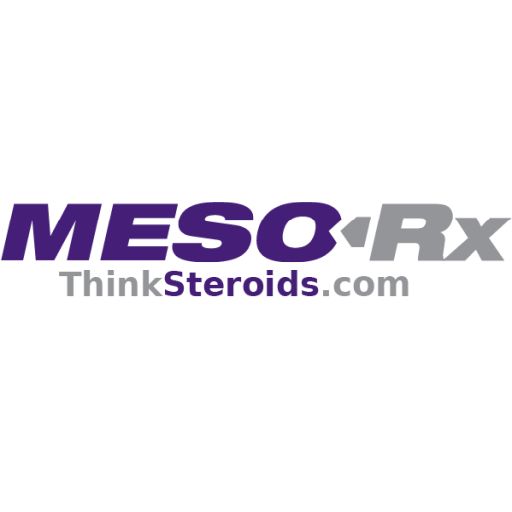 thinksteroids.com
thinksteroids.com
Items of priority and importance (such as Arimidex, for proof of accuracy even in small dose products) were sent for the first round of testing, and more items will be sent to Jano for testing in the immediate future to ensure the continuation of high quality product. As test results come back, results will be posted in our testing thread.
How to order
So how can an interested party place an order? We can be reached at...
AcePharma@tutanota.com
Available payment options are E-transfer or Bitcoin. All packages are shipped Canada Post, with tracking provided within 48 hours of payment.
Test 400, a lower dosed Anavar tailored towards females, a daily Cialis, and a Cialis/Viagra blend are in the process of being added onto the list and we are hoping to have those ready very soon, with other product additions coming shortly thereafter.
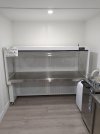
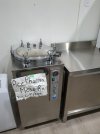
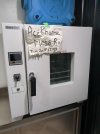
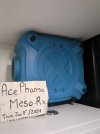 We look forward to being a part of the MESO community.
We look forward to being a part of the MESO community.
Hello, MESO! Some of you may recognize us already, for those that don’t know us, allow me to introduce ourselves. We are ACE Pharmaceuticals. We have been a Canadian domestic lab of modest size for quite some time, as increasing production requires significant investment of capital and time. We are here today proud to announce that after some extensive growth on our end, we would like to open up our business to the Canadian community of MESO.
With regulated pharmaceutical companies setting the standard of professionalism, it gave us something to emulate. If a UGL was to produce exogenous hormone for human metabolization, the ideal and most professional lab possible would emulate GMP protocol, as do the big companies for a reason.
(You can find GMP compliances here)
Code:
https://www.accessdata.fda.gov/scripts/cdrh/cfdocs/cfcfr/CFRSearch.cfm?CFRPart=211To sum it up for you, here are the GMP clean room requirements
• Flush design and finish, meaning no footholds for dust
• Monitoring of environmental factors - GMP guidelines are stricter than ISO 14645 for particle monitoring…
- Temperature consistent 18*
- Pressure positive room
- No higher than 60% Humidity
- Microbiological contaminates mitigation
• Passageways and airlocks must be air tight or ventilated
• Interlocking airlock system between entrance and exit
• At Rest vs In Operation clean room status
• HVAC Ability
• Sinks and drains must have a shut off so that open outside air has no pathway in
It was obvious from these points that there was going to be 2 sections to our lab. A gowning room and a clean room, for sterile preparations only. After some drafting and study of ready to order GMP compliant units, we built a lab that covers all of those bases.
Please note that we do not claim to be a GMP certified lab. We simply emulated and reverse engineered the concept to achieve an environment in which we are able to produce our most accurate and sterile product possible.
Injectable Solution Procedure
To inspire confidence, we would like to tell you about the steps and measures we have in place to make a sterile, accurate and quality product.
For Injectable solutions, vials and glassware are washed in a soapy water and rinsed in distilled water, before being completely submerged in 70% isopropyl alcohol and ran through an autoclave, and finally a professional lab quality dedicated drying oven. All beakers, bottle top dispensers, rubber stoppers, flasks, etc all get this sterilization treatment as well.
When the labs status is “in operation” there is a HEPA filter that is automated to filter the clean room at a rate of 100% of the volume of the room per minute. With the clean room being totally sealed off, the HEPA filter positively pressurizes the room so that if outside air were to meet inside air, outside contaminants would not enter the clean room as the pressure inside the room is greater than outside. The HEPA filter has a built in UVC lamp and filters that all entering air must pass through, ensuring sterility of the production site
We have an ozone generator, which is automated to flood the facility once a night when nobody is there, as ozone is a natural microbial killer. You can see what happens to microbes in the presence of ozone here.
Code:
https://ozonesolutions.com/blog/ozone-effects-on-pathogens/Semi finished oil is then vacuumed through a sterile .20um filter with a sterile .45um pre filter into a sterile containment system, where it is then dispensed in 10.5ml increments under a flow hood into the sterilized vials, where it is then crimped and shipped to our happy customers.
Oral Tablet Procedure
For Orally administered products, the active pharmaceutical ingredient is mixed together using a step method for the highest accuracy. Density ratios are taken from API to binder to coloring in order to ensure maximum accuracy. (This method is a MUST for low mg products such as Arimidex, to make an accurate product - which can be seen by our Janoshik testing.)
The powder is then pressed into oral tablets, and I know I am biased… but I really really am happy with the quality of our tablets. Accuracy of the product aside, in terms of tablet integrity our tablets hold very strong and snap well right on the perforated line.
We do not use the sterile brew room for oral tablets at all whatsoever, as the brew room is reserved for sterile solutions only as to not be compromised.
Product Testing
To verify accuracy our thread with Janoshik HPLC testing can be found here,
Ace Pharmaceutical Solutions - Jano Testing (Canadian Domestic)
Hello Meso, We are Ace Pharmaceutical Solutions. This is our recent HPLC testing from Janoshik and we will continue to update this thread as more testing is done.
 thinksteroids.com
thinksteroids.com
Items of priority and importance (such as Arimidex, for proof of accuracy even in small dose products) were sent for the first round of testing, and more items will be sent to Jano for testing in the immediate future to ensure the continuation of high quality product. As test results come back, results will be posted in our testing thread.
How to order
So how can an interested party place an order? We can be reached at...
AcePharma@tutanota.com
Available payment options are E-transfer or Bitcoin. All packages are shipped Canada Post, with tracking provided within 48 hours of payment.
Test 400, a lower dosed Anavar tailored towards females, a daily Cialis, and a Cialis/Viagra blend are in the process of being added onto the list and we are hoping to have those ready very soon, with other product additions coming shortly thereafter.



 We look forward to being a part of the MESO community.
We look forward to being a part of the MESO community.
